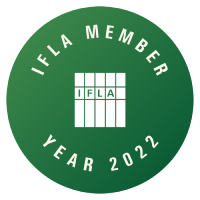Types of References
|
Book Reference: A reference to a book will always have a place of publication and a publisher. |
 |
|
|
|
|
Scholarly Journal Article Reference: Notice that the title of the article (Fighting fire ...) appears as regular text, while the title of the journal in whicht the article appears (Geographical Review) is italicized. Another unique feature of the journal article reference is the presence of volume and page numbers that are given immediately after the title of the journal. Unlike a reference to a book, journal article reference does not include a publisher and a place of publication. |
 |
|
|
|
|
Internet Source Reference: You should also include the date on which you accessed the website. This informs the reader that the website address was valid on that day. Note: Over time, websites may change their URL address.
|
 |
|
|
|
|
Essay or Chapter in a Book: The name of the author of the chapter or essay always appears at the beginning of the reference, followed by the date of publication. Then the title of the chapter or essay is given. In APA referencing style the title of the chapter or essay is not italicized nor bolded or enclosed in quotation marks. You know that the reference is to an excerpt from a book because of the word "In" followed by the name of the editor of the book and its title to indicate that the essay or chapter is available in this book. The title of the actual book in which the chapter appears is italicized. Include specific page numbers of the chapter at the end of the reference. |
 |
|
|
|
|
Government Publication Reference: Government publication is defined as "Informational matter which is printed as an individual document at Government expense or as required by law." Due to the varied nature of government documents, references to them are not always straightforward. However, references should include certain pieces of information so that the source can be quickly identified. One of the identifiers for a government publication reference is the issuing body (the government body issuing the document) which is always given as a publisher, e.g. Statistics South Africa; Justice & Constitutional Development; South african Reserve Bank, etc... |
 |
|
|
|
|
Popular Magazine Article Reference: Popular magazines, newspapers, and journals are all referred to as "periodicals" in the library. The structure for an article appearing in a magazine is similar to that of a journal article. However, the publication date should also include the month and day of publication.
|
 |
[Please note:APA style is used for the above examples.]
Please work through the following quiz:
The page may take a minute to load. Please be patient.

University of the Western Cape,
Robert Sobukwe Road,
Bellville,
7535
Tel: 021 959 2946
